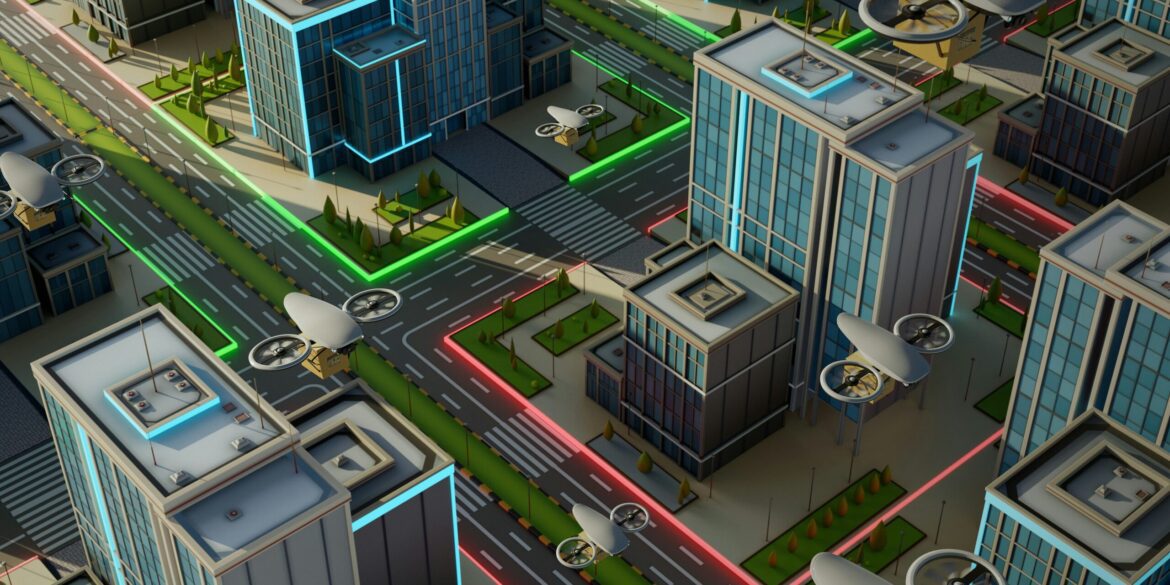The real estate industry is undergoing a dramatic transformation, driven by technological advancements that are reshaping how buildings are designed, managed, and inhabited. At the heart of this change lies the rise of smart buildings—structures embedded with Internet of Things (IoT) devices, artificial intelligence (AI), and other advanced technologies that optimize various functions for sustainability, efficiency, and user experience.
Smart buildings are no longer a futuristic concept; they are rapidly becoming the norm in urban development. With urbanization on the rise and environmental sustainability becoming increasingly important, developers are investing heavily in smart building technologies to create more efficient, sustainable, and comfortable spaces for both residents and businesses.
Understanding Smart Buildings
A smart building integrates various technologies to automate and optimize its operations. These technologies include sensors, IoT devices, and AI systems that monitor and adjust environmental factors such as lighting, heating, ventilation, air conditioning (HVAC), and security. The goal is to improve energy efficiency, reduce operating costs, and enhance the overall user experience.
For example, in smart buildings, AI-driven systems can automatically adjust the temperature and lighting based on occupancy and environmental conditions, ensuring comfort while minimizing energy waste. These buildings are also designed to be more sustainable, with systems that promote energy conservation and reduce their carbon footprint.
Key Drivers Behind the Smart Building Trend
Several factors are contributing to the rapid growth of smart buildings in urban development. One of the primary drivers is the increasing demand for energy efficiency and sustainability. As concerns about climate change and environmental impact intensify, building developers are increasingly turning to smart building technologies to reduce energy consumption and minimize waste.
Smart buildings are also seen as a way to improve operational efficiency. For example, advanced sensors and analytics can detect maintenance issues before they become major problems, reducing downtime and the need for costly repairs. This predictive maintenance capability is a significant advantage for property owners and managers, helping them to extend the lifespan of building systems and avoid expensive emergency repairs.
Moreover, smart buildings are increasingly popular with tenants, as they offer enhanced comfort and convenience. Occupants benefit from automated systems that adjust temperature and lighting according to their preferences, as well as IoT-enabled features like smart appliances and voice-controlled assistants. These amenities enhance the quality of life for residents and employees alike.
The Role of IoT in Smart Buildings
The Internet of Things (IoT) plays a crucial role in the functioning of smart buildings. IoT devices are connected to a centralized network that enables real-time data collection, analysis, and decision-making. For instance, smart thermostats, lighting systems, and security cameras are all IoT-enabled devices that communicate with each other to optimize building operations.
In office buildings, IoT technology is used to create a more flexible and productive work environment. Sensors can track employee movement and adjust lighting and HVAC systems to create comfortable working conditions. In residential buildings, IoT devices like smart locks, thermostats, and appliances allow residents to control various aspects of their homes remotely, offering convenience and improved security.
The Benefits of Smart Buildings
Smart buildings offer numerous benefits to developers, building owners, tenants, and the environment. From a financial perspective, smart buildings can significantly reduce operational costs. Energy-efficient systems lower utility bills, and predictive maintenance helps to avoid costly repairs. In addition, many smart buildings qualify for green building certifications, such as LEED (Leadership in Energy and Environmental Design), which can enhance their market value and attract tenants.
For tenants, the advantages are clear: improved comfort, convenience, and security. Smart features like automated lighting, climate control, and even personalized alerts or reminders improve the quality of life for those who live or work in these buildings. These technologies also offer increased transparency, as occupants can track energy usage and environmental conditions through smart building apps or interfaces.
The Environmental Impact of Smart Buildings
In addition to operational and user benefits, smart buildings are playing an important role in sustainability efforts. By optimizing energy consumption, reducing waste, and promoting efficient use of resources, smart buildings are helping to reduce the environmental impact of urban spaces. Many smart buildings are designed to minimize their carbon footprint, incorporating renewable energy sources such as solar panels, energy-efficient materials, and sustainable building practices.
The integration of renewable energy and energy-saving technologies in smart buildings is essential for meeting global sustainability goals. As more cities commit to achieving net-zero emissions and reducing their carbon footprints, smart buildings are seen as a key solution in achieving these objectives.
The Future of Smart Buildings
The smart building trend is only expected to grow in the coming years, driven by advancements in technology, increased demand for energy efficiency, and rising environmental awareness. As the urban population continues to grow, developers are under pressure to build more sustainable, efficient, and comfortable living and working spaces. Smart buildings offer a viable solution to these challenges, creating the infrastructure necessary for modern, sustainable cities.
Looking ahead, the role of AI and IoT in building management will only continue to evolve. As machine learning algorithms become more sophisticated, smart buildings will become even more intuitive and capable of responding to changing conditions in real-time. The integration of smart cities and the further development of urban infrastructure will also support the growth of smart buildings, creating interconnected urban ecosystems that are more efficient, sustainable, and livable.
Conclusion
Smart buildings represent a significant shift in how we think about and design urban spaces. By integrating advanced technologies, including IoT and AI, these buildings are transforming the way we interact with our environments. Whether it’s improving energy efficiency, enhancing user experience, or promoting sustainability, the rise of smart buildings is setting the stage for a smarter, more connected urban future.

